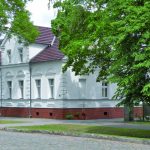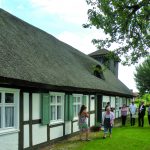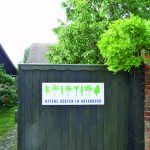Neutrebbin, Brandenburg, Germany
Neutrebbin, a village with a population of almost 1,100 inhabitants, was founded in 1754 under Friedrich the Great after the draining of the riverscape of the Oder. With the reclamation came fertile farm land for the cultivation of potatoes and veg-etables, as well as for the fattening of geese. Nevertheless already in the 1950s this region saw a huge transition in agricultural use. Essential changes finally came with the German reunification in 1990, also largely effecting agriculture.
Roughly 60 kilometers from Berlin, Neutrebbin offers appealing scenery and also presents more and more space for living and relaxing purposes. Many homes and apartments have been built, while half-timber houses and older buildings have been refurbished and revitalized. Today the whole town center is protected as a historic monument. Since the German reunification Neutrebbin moved from being an agricultural production site to an attractive place of residence, which puts the quality of liv-ing first. The active culture of clubs and associations in addition to the personal contributions of the proactive community are remarkable. The village development is carried by a broad public and consists of a variety of different areas, all connected with each other. In consideration of the size of the village there are a lot of employment opportunities offered by local craft and business enterprises aside from agriculture. There is also a broad range of services offered. Therefore the situation concern-ing local amenities has been proven to be extremly good.
Another remarkable achievement seems to be the successful activity in providing more social services, like nurseries and schools. Also the athletic and cultural offer has been expand-ed. At the center of all reflections, projects and initiatives have always been and still are families and especially children and adolescents. Simultaneously in the last couple of years another focus in village development has been coping with the chal-lenges of demographic transition. Currently work is done on the fields of developing adequate settlement models and design-ing public spaces barrier-free, in order to create an attractive living environment also for the elderly.
Even though or because Neutrebbin gained many new citizens in the last couple of years, maintaining the social cohesion is a major goal. Not least because of the knowledge that the true strengths of the village are in the socio-cultural area. The citizens have a very high degree of identification with their community, the surrounding scenery, and the historic heritage as shown in many little projects and activities in the past or present. The maintenance and preservation of the valuable building stock in the village center have become quite natural. Many of these tasks are accomplished by personal contributions.
Evaluated: 2014



